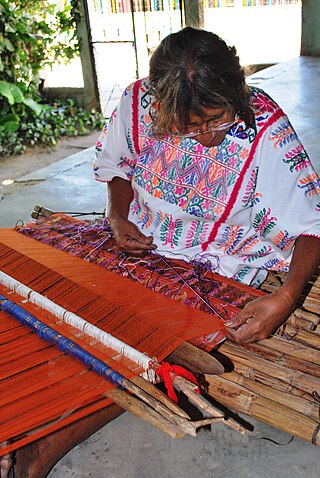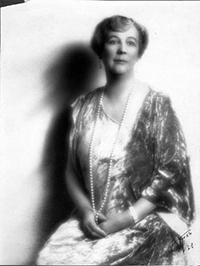Related Research Articles

Woodworking is the skill of making items from wood, and includes cabinetry, furniture making, wood carving, joinery, carpentry, and woodturning.
Stamp or Stamps or Stamping may refer to:

A rubber stamp is an image or pattern that has been carved, molded, laser engraved, or vulcanized onto a sheet of rubber. Rubber stamping, also called stamping, is a craft in which some type of ink made of dye or pigment is applied to a rubber stamp, and used to make decorative images on some media, such as paper or fabric.

Quilling is an art form that involves the use of strips of paper that are rolled, shaped, and glued together to create decorative designs. The paper shape is manipulated to create designs on their own or to decorate other objects, such as greetings cards, pictures, boxes, or to make jewelry.

Letterpress printing is a technique of relief printing for producing many copies by repeated direct impression of an inked, raised surface against individual sheets of paper or a continuous roll of paper. A worker composes and locks movable type into the "bed" or "chase" of a press, inks it, and presses paper against it to transfer the ink from the type, which creates an impression on the paper.

Shoemaking is the process of making footwear.

Leather carving is the process of giving a three-dimensional appearance to leather craft objects or works of art by cutting and stamping the surface. Many different kinds of leathers can be used for these crafts.

A scratch awl is a woodworking layout and point-making tool. It is used to scribe a line to be followed by a hand saw or chisel when making woodworking joints and other operations.

Al Stohlman was an American pioneer in leathercraft and continues to influence hundreds of thousands of leathercrafters worldwide. He and his wife Ann produced hundreds of magazine articles, doodle pages and other resources still used in the leathercraft industry. A museum featuring much of their life's work is part of a collection of leather art located in the lobby of the Tandy Leather Factory Headquarters in Fort Worth, Texas.

Leather crafting or simply leathercraft is the practice of making leather into craft objects or works of art, using shaping techniques, coloring techniques or both.

A punch is a tool used to indent or create a hole through a hard surface. They usually consist of a hard metal rod with a narrow tip at one end and a broad flat "butt" at the other. When used, the narrower end is pointed against a target surface and the broad end is struck with a hammer or mallet, causing the blunt force of the blow to be transmitted through the rod body and focused more sharply onto a small area. Typically, woodworkers use a ball-peen hammer to strike a punch.

A swivel knife is a chisel-edged blade held upright and mounted on a pivot with a saddle for a finger. It is held somewhat like a pencil, but between the thumb and middle fingers, while the forefinger rides in the saddle above. The saddle is free to rotate and in more sophisticated models, may rotate on ball bearings.

The Igualada Leather Museum, located in Igualada, Catalonia, was created in 1954 and was the first leather museum in Spain, and the third one in Europe. The collections are displayed in two nearby buildings in Igualada: the "Cal Boyer" building, a former cotton textile factory from the late 19th century, and the "Cal Granotes" building, an 18th-century tannery.

Bernard Rosenblum (1927–2007) was a Master Craftsman Gilder and Art Restorer of the National Museums, the successor of the workshop Gainerie Bettenfeld. He was awarded the Political deportation and internment medal as well as Commander of the Order of Civic Education.

The handcrafts of Guerrero include a number of products which are mostly made by the indigenous communities of the Mexican state of Guerrero. Some, like pottery and basketry, have existed relatively intact since the pre Hispanic period, while others have gone through significant changes in technique and design since the colonial period. Today, much of the production is for sale in the state's major tourism centers, Acapulco, Zihuatanejo and Taxco, which has influence the crafts’ modern evolution. The most important craft traditions include amate bark painting, the lacquerware of Olinalá and nearby communities and the silverwork of Taxdo.

The Al Stohlman Award for Achievement in Leathercraft honors the accomplishments of individual leather workers worldwide for their continued dedication and exemplary service to leathercraft. The criteria for nominations are someone who has demonstrated continued devotion to the advancement of leathercraft, following the example of Al Stohlman, who is most well-known for publishing over 40 books, creating numerous pattern packs, and innovating many new tools for leatherworking.

Elizabeth Eaton Burton (1869–1937) was an American artist and designer whose work typified the Arts and Crafts style in southern California.

Al Shelton established the reputation of “Cowboy Artist to the Stars”, creating custom-crafted leatherwork embossed with iconic cowpoke imagery in his workshop on Ventura Boulevard. Among his regular clientele was Steve McQueen, Ronald Reagan, Clark Gable, and many others. Several of his pieces of are featured at the Autry Museum of the American West.

Manus x Machina: Fashion in an Age of Technology was an exhibition at the Metropolitan Museum of Art that showcased the dichotomy between Manus, also known as haute couture, and Machina, also known as prêt-à-porter. The Metropolitan Museum of Art debuted this exhibition during the 2016 Met Gala and ran it from May 5, 2016 to September 5, 2016. It included over 120 pieces from designers like Chanel and Christian Dior, varying from the 20th Century to present day.
In leathercraft, a pricking iron is a handheld tool resembling a fork which is used to create guide holes in leather which must then be opened up with an awl before the piece can be stitched. A pricking iron is different from a leather chisel in that a chisel is designed to create the entire set of holes, not just the guides for then, and does not require follow-up with an awl.
References
- ↑ "Leatherworking Beginner's Guide". Elktracks Studio. Retrieved 2022-03-02.
- ↑ Byrd, Luke (2021-02-25). Leather Working Book for Beginners: A Leather Crafting Starter Handbook of 15 Leather Craft Projects Plus Tips, Tools and Techniques to Get You Started. Luke Byrd. p. 58.